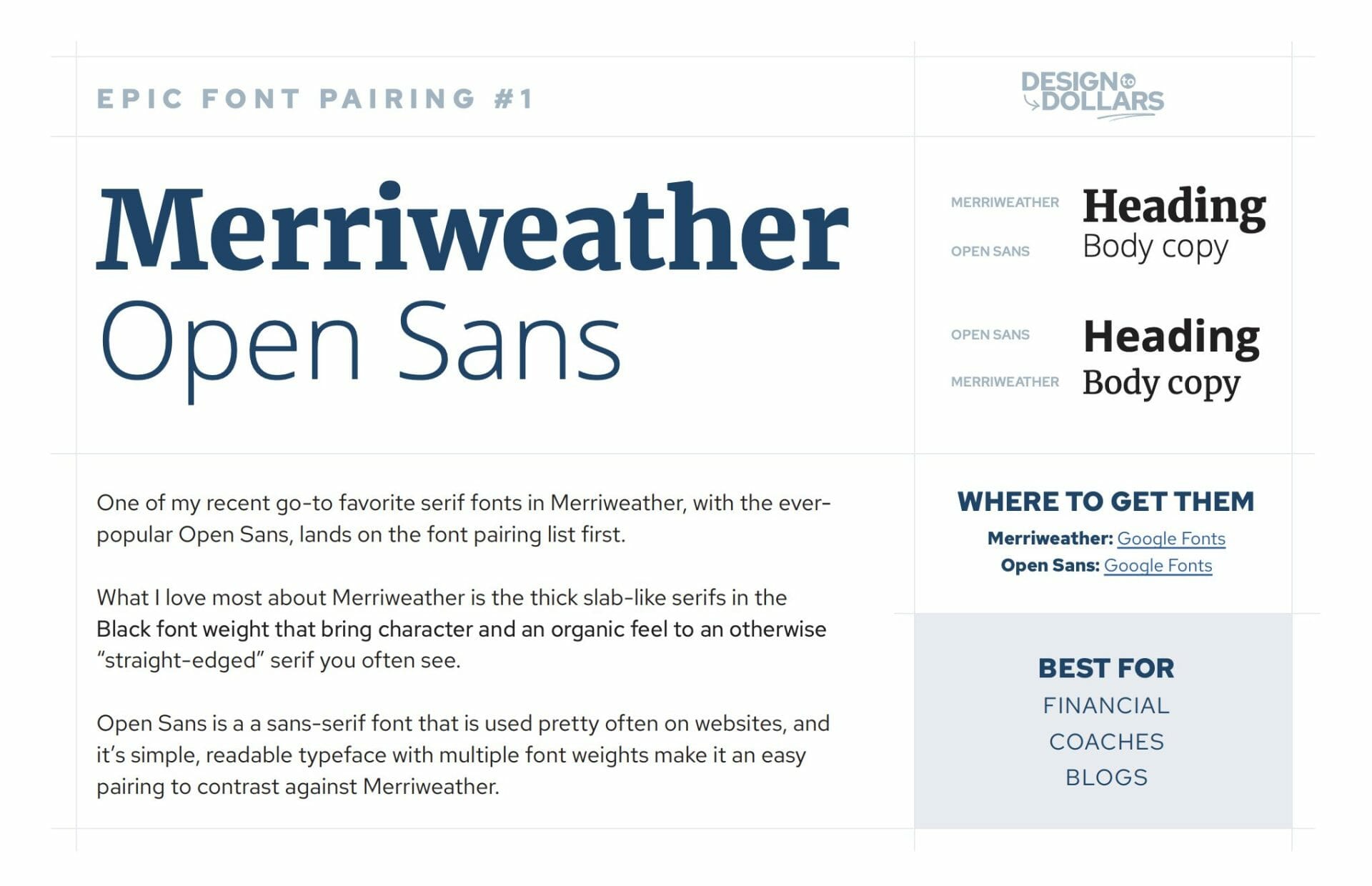You may have heard about them before, but really never took the time to understand it. So what is a keyword? And what importance does it play on your website?
It can be extremely confusing, but I can assure you they should not be ignored and can be very powerful in helping your website gain organic traffic from Google.
I do not expect you to fully grasp what to do with keywords, and develop a full SEO strategy, but the goal is to help you gain a better understanding of what a keyword is.
Ready to find out? Let’s begin.
5 Epic Font Pairings You Can’t Go Wrong With
Tired of searching for fonts? With my 10+ years of design experience, I’ve put together the best font pairings for you to use, where to find them, and what industry they’re best for.
Get the Free Guide
What is a keyword?
Well, a keyword is basically what someone might type into Google as a search to find something in particular.
For example, if you’re looking for dog beds for your chihuahua, you’ll probably type into Google “small dog beds” — the words small dog beds are considered your keywords.
They can be just a single word, or multiple words (as shown in our example) — but either way, they function the same way.
Why should keywords matter to me?
So why does this matter?
Well, if you’re a business who sells small dog beds, you’ll definitely want your website to be one of the first search results after someone enters “small dog beds” on Google. This is what is called organic traffic — the method of someone finding your website based on an arbitrary search for the product or service you are selling.
By utilizing particular keywords on your website, you are helping to tell Google what your business does, and ensuring that they know to show your website for the associated search.
How do I know what keywords to use?
Now that we’ve identified what a keyword is, and the value it can bring, you might be wondering what keywords you should use. This is a very valid question, and obviously changes for every single business.
You’ll want to consider what products/services you are offering, and then ask yourself — what would my customer enter in Google to find what I’m offering?
Most searches are concise, so going back to our dog bed example, I’m going to assume that this particular business also sells other kinds of dog beds.
So some potential good keywords to consider would be:
- small dog beds
- big dog beds
- medium dog beds
- affordable dog beds
- dog beds
- raised dog beds
- washable dog beds
You can also use keyword research tools, such as Ahrefs and Google Keyword Planner, to help you identify the best list of keywords to tackle.
However, each of these keywords have their own keyword difficulty, and potential volume. Now what the heck are those?
Keyword difficulty, or sometimes referred to as KD, is a scale of how hard it would be to get your website to rank on the first page of Google for that particular keyword.
For example, the keyword dog bed has a KD of 55. This is technically considered a “hard” difficulty — meaning there is a LOT of competition for this keyword and it would take A LOT of work and time to get your website to rank on the top search results.
Is it impossible? No, but just have realistic expectations that it’s going to be very hard to rank for that particular keyword.
Keyword volume is the average number of search results for that particular keyword in any given month. Dog beds has a volume of 80,000 searches a month, which means that someone types into Google dog beds 80,000 times per month — giving your website 80,000 chances to be seen.
The high volume is a key indicator of the KD — usually the higher the volume, the higher the difficulty. More people want that huge potential amount of organic traffic to their site, so there are thousands of businesses vying for that top page real estate on Google.

Where do I put the keywords?
Once you’ve identified your list of keywords, you’ll then want to optimize your website for these.
How you actually carry that out, is part of what’s called Search Engine Optimization (or SEO for short).
SEO is the strategy of optimizing your website or webpage for a search engine’s organic results. The end goal is for Google to recognize your website as the very best result for the particular keyword(s) you’re aiming to rank for.
It’s a multi-faceted approach in which involves many different tasks, and can get very in-depth depending on how aggressive you want to be.
For foundational places to start, you should use your keyword(s) in your webpage Title tag (ex: Pup Mall – Dog beds for all), in the URL of the page you’re aiming to rank for (ex: /dog-beds), as well as sprinkled throughout your page where it fits naturally.
The placements of the keywords help Google to recognize what this page is about, and hopefully display your website as a result.
Keep in mind — SEO is not a quick-strategy for getting to the top of Google, and nor does it guarantee that. It is a process in which takes several months before your website can see any significant results if done properly.
What ways can you track keywords?
After your keywords are implemented, you’ll want to find out how the page is performing.
You can do this various ways, and there are hundreds of different tools online, including Ahrefs, SEMrush, and Serpfox.
Each of these tools, and more, can help you track your website’s keywords and tell you how they are performing, where you are ranking, and more.
Additionally, you can utilize Google Search Console to view your website’s rankings and keywords.
Now you’re a keyword expert!
Ok, maybe not really — but hopefully by now you are able to identify what is a keyword and why it’s important.
If you’re interested in learning more, or would like to see about improving your website’s SEO, feel free to reach out to AWD — we’d love to help!


